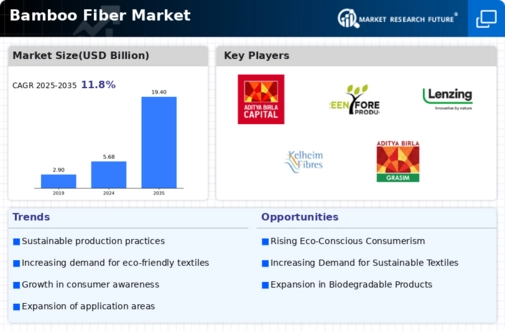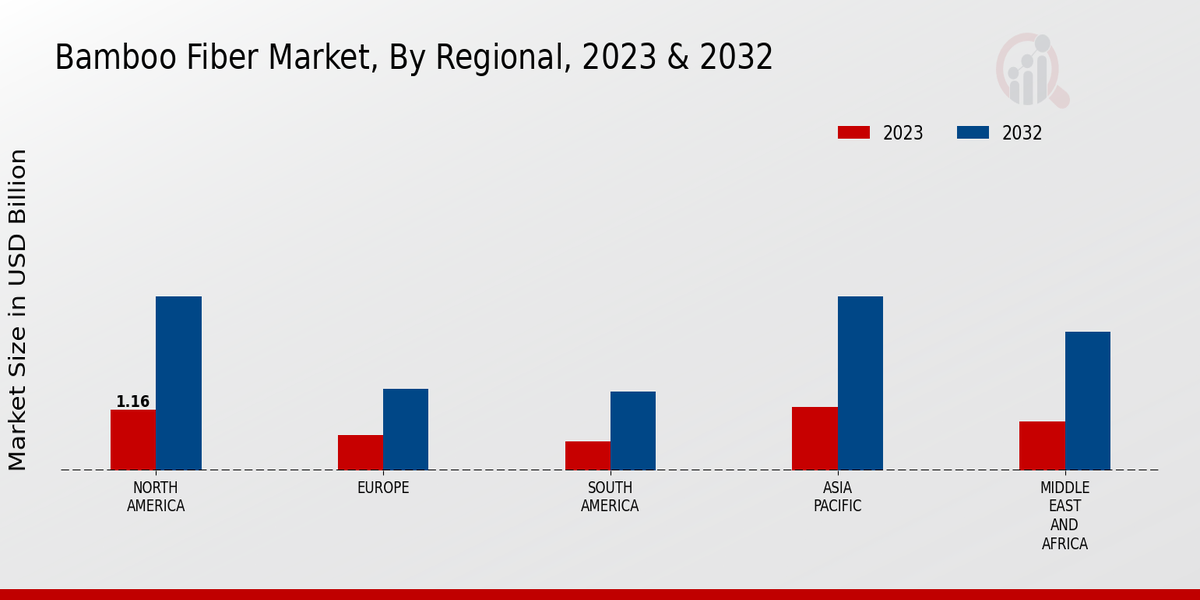Growing Textile Industry
The expansion of the global textile industry significantly influences the Global Bamboo Fiber Market Industry. As the demand for innovative and sustainable textiles increases, bamboo fiber emerges as a viable alternative to conventional materials. The textile sector is projected to grow substantially, with bamboo fiber playing a crucial role due to its unique properties. The anticipated compound annual growth rate of 11.83% from 2025 to 2035 indicates a robust market trajectory. This growth is likely fueled by the increasing adoption of bamboo fiber in various applications, including clothing, home textiles, and industrial fabrics, thereby enhancing the overall market landscape.
Market Growth Projections
The Global Bamboo Fiber Market Industry is poised for substantial growth, with projections indicating a rise from 5.68 USD Billion in 2024 to 19.4 USD Billion by 2035. This trajectory suggests a compound annual growth rate of 11.83% from 2025 to 2035, reflecting increasing consumer interest in sustainable and eco-friendly products. The market's expansion is likely driven by various factors, including rising awareness of environmental issues, health benefits associated with bamboo fiber, and advancements in production technologies. These projections highlight the potential for bamboo fiber to become a dominant player in the global textile market.
Sustainable Material Demand
The increasing global emphasis on sustainability drives the Global Bamboo Fiber Market Industry. As consumers become more environmentally conscious, the demand for eco-friendly textiles rises. Bamboo fiber, known for its biodegradability and low environmental impact, aligns with this trend. In 2024, the market is projected to reach 5.68 USD Billion, reflecting a growing preference for sustainable materials in fashion and home textiles. This shift is evident in brands adopting bamboo fiber to enhance their sustainability profiles, thereby attracting eco-conscious consumers. The Global Bamboo Fiber Market Industry is likely to expand as more industries recognize the benefits of incorporating bamboo into their product lines.
Health Benefits of Bamboo Fiber
Bamboo fiber is recognized for its health benefits, which contributes to its popularity in the Global Bamboo Fiber Market Industry. The fiber possesses natural antibacterial properties, making it suitable for textiles that promote hygiene. Additionally, bamboo fiber is hypoallergenic, appealing to consumers with sensitive skin. As awareness of health and wellness continues to grow, products made from bamboo fiber are increasingly favored in sectors like apparel and bedding. This trend suggests a potential for market growth as consumers prioritize health-conscious choices. The Global Bamboo Fiber Market Industry may see a significant increase in demand as these health benefits become more widely recognized.
Technological Advancements in Production
Technological innovations in the production of bamboo fiber are enhancing efficiency and quality, positively impacting the Global Bamboo Fiber Market Industry. Advanced processing techniques allow for the extraction of bamboo fiber with minimal waste and energy consumption. This not only reduces production costs but also improves the overall quality of the final product. As manufacturers adopt these technologies, the market is likely to experience growth, with projections indicating a rise to 19.4 USD Billion by 2035. The integration of technology in bamboo fiber production may also attract investments, further stimulating the Global Bamboo Fiber Market Industry.
Government Support for Sustainable Practices
Government initiatives promoting sustainable practices are likely to bolster the Global Bamboo Fiber Market Industry. Many countries are implementing policies that encourage the use of renewable resources and sustainable materials in manufacturing. Such support can manifest in subsidies, tax incentives, and research funding aimed at developing eco-friendly alternatives. As governments worldwide prioritize sustainability, the bamboo fiber sector may benefit from increased visibility and investment. This supportive environment could lead to a more robust market presence, further driving the growth of the Global Bamboo Fiber Market Industry.

















Leave a Comment